We at Crack4sure are committed to giving students who are preparing for the Qlik QSDA2022 Exam the most current and reliable questions . To help people study, we've made some of our Qlik Sense Data Architect Certification Exam–2022 exam materials available for free to everyone. You can take the Free QSDA2022 Practice Test as many times as you want. The answers to the practice questions are given, and each answer is explained.
A data architect needs to arrange data to create an app with a map where multiple location points consolidate into hexagonal areas based on postal codes
The areas will be color coded based on the number of vendors in the location.
Which GeoAnalytics operation should the data architect use?
Refer to the exhibit.

A data architect executes the script.
What will be the value of the first row for Field_1?

A data architect is creating an app using three tables. After executing the script, a warning displays
Which two steps should the data architect do to resolve this warning? (Select two.)
Refer to the exhibits.

While debugging an app, a developer loads data from an application layer QVD file.
In the process of separating a concatenated key into two parts, some split results are missing data
What should the data architect do?
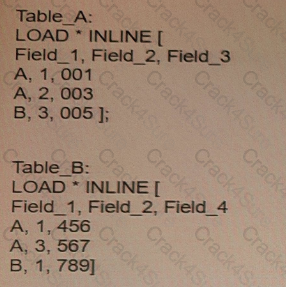
Refer io the exhibit.
A data architect needs to modify the script to ONLY load rows from Table_B when Field_1 and Field_2 are the same as in Table_A. (For example, only the row containing A, 1, 456 should be loaded from Table_B.)
Which script should the data architect use?
A)
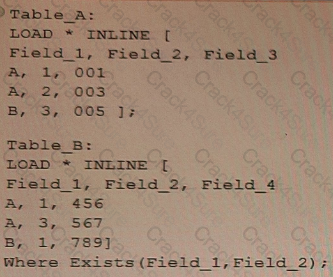
B)
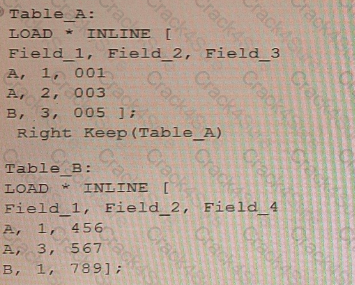
C)
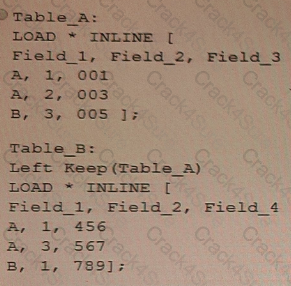
D)
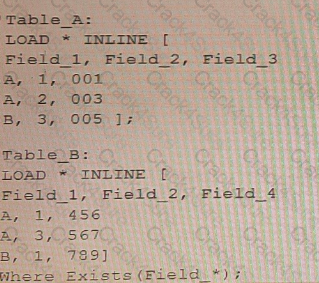
Refer to the exhibit.
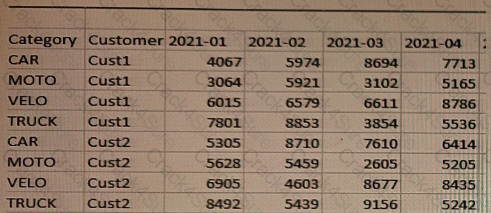
A customer needs to load forecast data from an Excel file.
Which preceding load statement should the data architect use to load the data?
A)

B)

C)

D)

A data architect completes development of a new app with two data sources Both data sources will also be used by other apps in the future The sources have different data refresh frequencies
• Source 1 Contains frequently updated data and must be refreshed hourly
• Source 2 Contains data that is transferred from a partner and must be refreshed weekly
Tasks must be created to load the data sources and make sure that the new app uses the most current data The data will be stored in two QVDs Which tasks should be created to meet these requirements'?
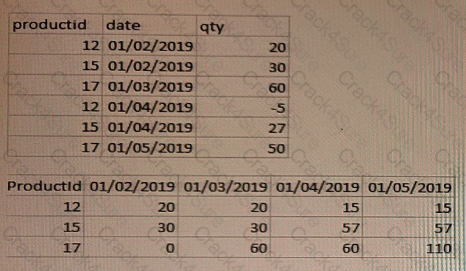
Refer to the exhibits.
The first table shows the source table (Original table).
This data represents the stocks stored every month for each product:
• The relevant fields are productid, qty, and date.
• The date field represents the calendar months using
• The qty field shows the product stock fluctuation from the current month versus the previous month. If there is no fluctuation between months, there are no new entries in the table.
The second table shows a Pivot table visualization the data analyst needs to create in the app displaying per each product the monthly trend of available stock.
For performance reasons, the data analyst requests the data architect to calculate the running stock quantity of each product for every month in the script.
Which approach should the data architect use?
A data architect executes the following script:
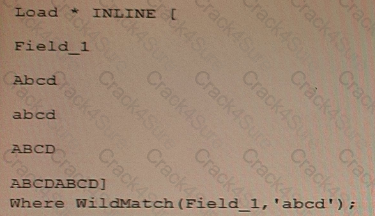
What will Field_1 contain after this script is executed?
Refer to the exhibit.
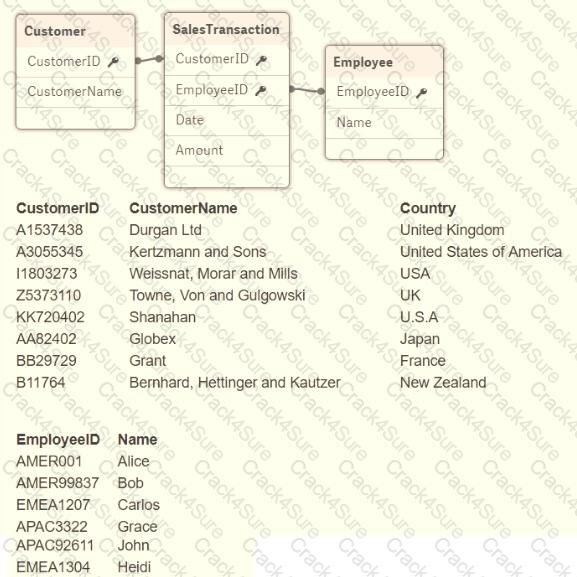
A global sales organization operates in three regions: AMERICAS, EMEA: and APAC. Each region stores its sales transactions in a separate database in which the employees update customer data through a third-party app. The data is extracted into three QVDs.
A data architect sets up a two-tier architecture for the data load. The data architect needs to add the region to the data model.
Which technique should the data architect use to create the Region field?
A data architect needs to upload data from ten different sources, but only if there are any changes after the last reload When data is updated, a new file is placed into a folder mapped to E A439926003 The data connection points to this folder.
The data architect plans a script which will:
1. Verify that the file exists
2. If the file exists, upload it Otherwise, skip to the next piece of code
The script will repeat this subroutine for each source. When the script ends, all uploaded files will be removed with a batch procedure.
Which option should the data architect use to meet these requirements?
Refer to the exhibit.
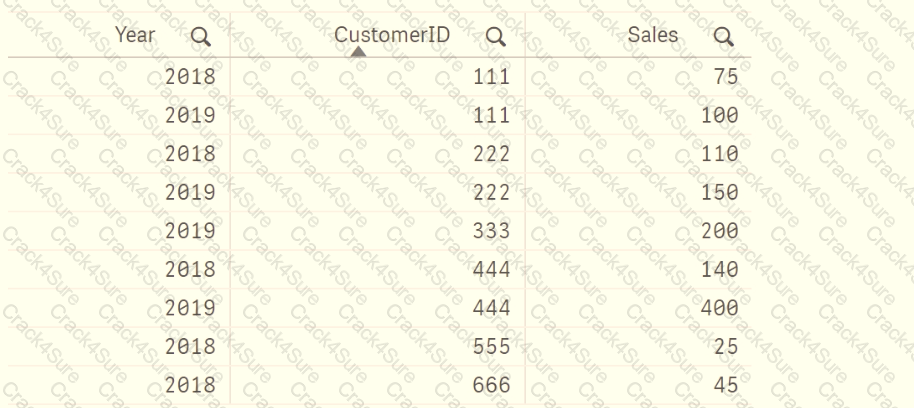
A data architect loads sales data and creates a table which shows only customers who made purchases in 2018 and 2019. The data architect applies the following set analysis expression on the sales measure. Count<{
Which option shows the resulting table after the expression is applied?
A)
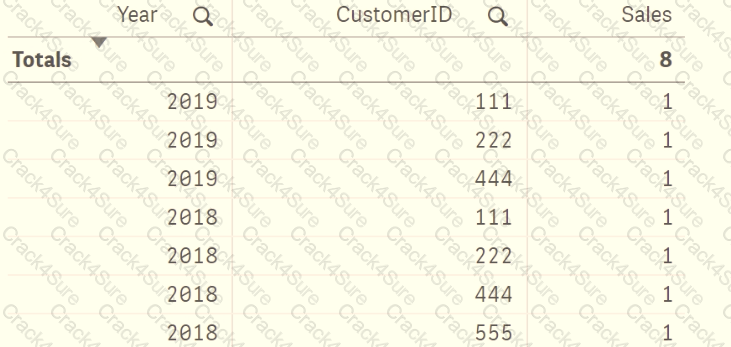
B)

C)
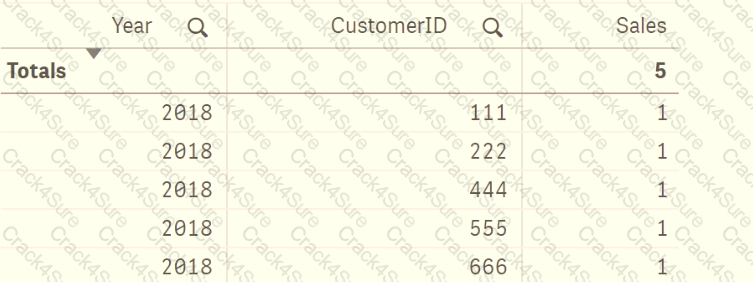
D)

ITALY IT001 HR
GERMANY DE002 HR
SPAIN SP03 FINANCE
FRANCE FRO04 SALES
Refer to the exhibit
A company stores the employee data within a key composed of Country UserlD, and Department. These fields are separated by a blank space. The UserlD field is composed of two characters that indicate the country followed by a unique code of two or three digits. A data architect wants to retrieve only that unique code.
A table is generated resulting from the following script

When the data architect selects a date, some, but NOT all, orders for that date are shown How should the data architect modify the script to show all orders for the selected date?
A)
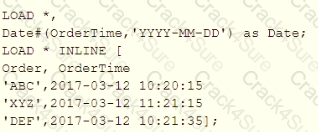
B)
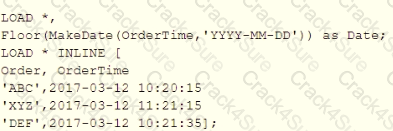
C)

D)
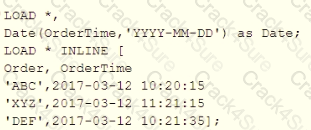
A human resources (HR) team manager is due to go on leave. The manager needs to assign permissions to colleague to help the HR team publish apps. Which action(s) should the manager assign to the colleague before going on leave?
A global retailer has a large database in which millions of sales transactions are added per hour.
Each regional sales manager should only see details for customers in their region. After filtering based on criteria such as region, gender, and income level, sales managers should be able to see the most current detailed transactions.
What should a data architect do to meet these requirements?
A data architect plans to build an app that contains geographically diverse data that must be specific to user run-time selections. The source contains transactional data. The app must have minimal impact on already limited server resources.
Which approach should the data architect use?
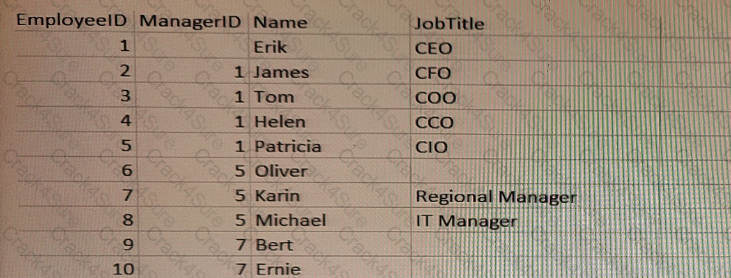
A Human Resources Director needs an app to analyze organizational structure. The Directory is particularly interested in the longest levels of line management.
Two table loads are required. Both use the same basic structure.
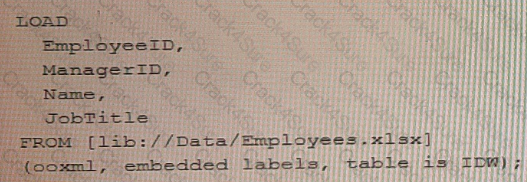
Which two table load prefixes are needed?
3 Months Free Update
3 Months Free Update
3 Months Free Update